HYPERHIDROSIS TREATMENT LONDON CHELSEA
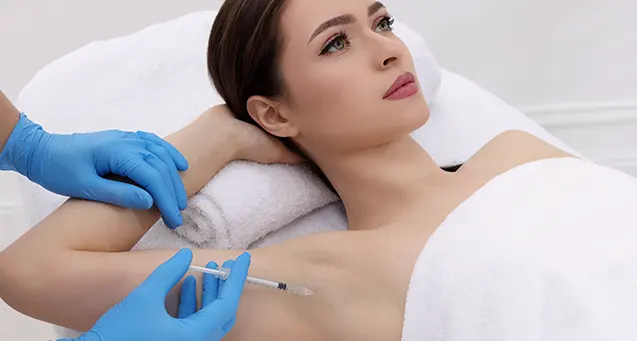
TREATMENT FOR HYPERHIDROSIS
Our doctors at Facial Clinic Chelsea can provide several treatments to aid with hyperhidrosis or excessive sweating. Firstly, your physician will prescribe some for you to utilise as self-care. We can look into other medical hyperhidrosis treatment alternatives if these don't help you control your disease or reduce your excessive sweating. In our clinic, we offer medical treatments for hyperhidrosis!
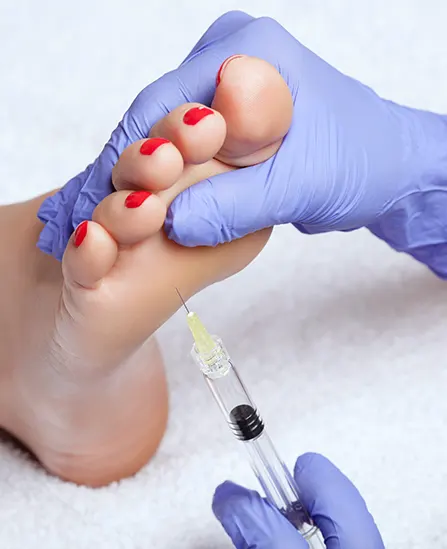
SELF-MANAGEMENT OF HYPERHIDROSIS
The first things to attempt in managing hyperhidrosis are topical remedies like talcum powder and cornflour powder (e.g., Zeasorb®) that can help absorb the extra perspiration. Usually, these are only beneficial in minor situations.
For the hands, feet, and armpits, use stronger antiperspirants with aluminium chloride, such as Driclor ® and AnHydrolForte ®. To prevent causing harm to clothing, they are applied two or three times a week at night and removed the next morning. Application, particularly for underarm perspiration, can be beneficial. Nevertheless, with time, they may irritate the skin. You should speak with your doctor if this occurs.
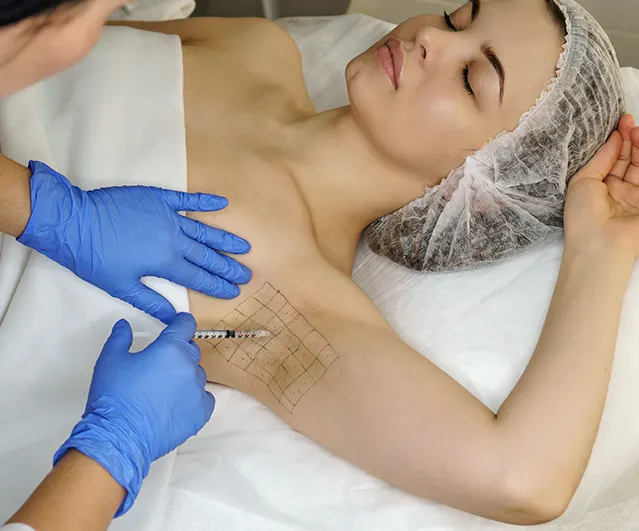
INTRAVENOUS BOTULINUM TOXIN (INJECTIONS)
For many people, injections of botulinum toxin are a successful treatment for hyperhidrosis.
Small quantities of the same substances used to treat wrinkles are injected into the afflicted areas of the skin as part of the treatment. They function by obstructing the neurons that supply the sweat glands, called eccrine glands. As a result, the glands cease to produce sweat.
For six to twelve weeks following treatment, the nerve ending is completely blocked; after that, new nerve ends begin to grow. This indicates that although the benefits of treating hyperhidrosis last for several months, they will ultimately fade.
ARE THERE ANY SORT OF SIDE EFFECTS?
Increased perspiration at some locations and bruises or soreness at the injection sites are possible side effects. Itching, soreness in the muscles, allergic responses, and weakness in the muscles are uncommon adverse effects.
WHAT IS THE DURATION OF THE WORK?
After treatment, the majority of patients experience some improvement in the first week. Usually, the effects endure for four to seven months.
WHAT IS INVOLVED IN THE TREATMENT?
Several little injections using a tiny needle into the afflicted areas, like your armpits, are required. Your skin may be a little red and swollen just after treatment, and the injections may hurt a little. Usually, this gets better in a few hours.
ADDITIONAL THERAPIES FOR HYPERHIDROSIS
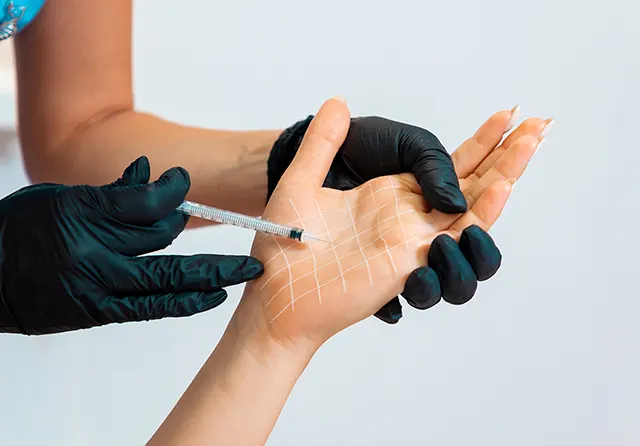
IONTOPHORESIS
Iontophoresis is submerging the areas of your body in warm water where your hyperhidrosis symptoms are at their worst. The immersion fluid is then exposed to a modest electric current. Glycopyrrhonium bromide is sometimes added by doctors to increase the effects.
Positive ions created by the current run straight into the sweat ducts, stopping the sweating process for an undisclosed reason because your body is naturally negatively charged.
Iontophoresis is safe and has been used in therapeutic settings for many years. With the exception of occasional dry mouth and mild tingling, very few people report discomfort. Iontophoresis typically requires several therapy sessions to be effective, and additional sessions are required to assist control your hyperhidrosis.
PROCEDURES FOR HYPERHIDROSIS
When all other options have been exhausted, surgery may be considered. There are two kinds of surgery available:
CURETTAGE OF SUBCUTANEOUS SWEAT GLANDS
Overactive sweat glands are removed while under general anaesthesia. In many situations, the technique can reduce perspiration by as much as 50%.
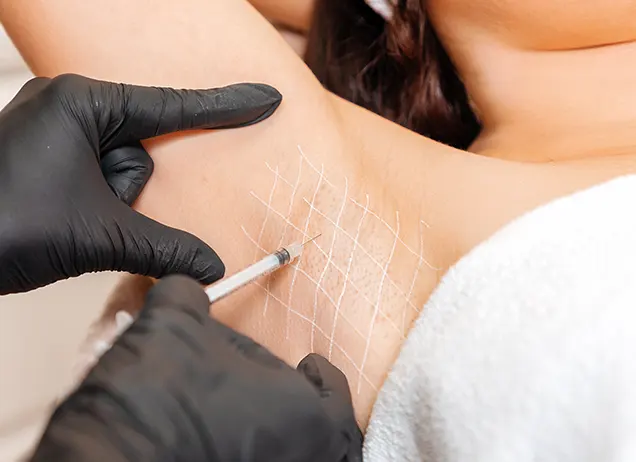
SYMPATHECTOMY IN THE THORACIC CAVITY
To do this, the nerves supplying the sweat glands must be severed. Under general anaesthesia, the surgeon removes a portion of the affected nerve fibres and ganglia in the spine if necessary. This puts an end to excessive hand and underarm perspiration.
Serious hyperhidrosis on the palms and underarms can be effectively treated with it; however, there is a 40–69% chance of compensating hyperhidrosis, which causes new, excessively sweaty areas to form, mainly on the lower parts of the body.

